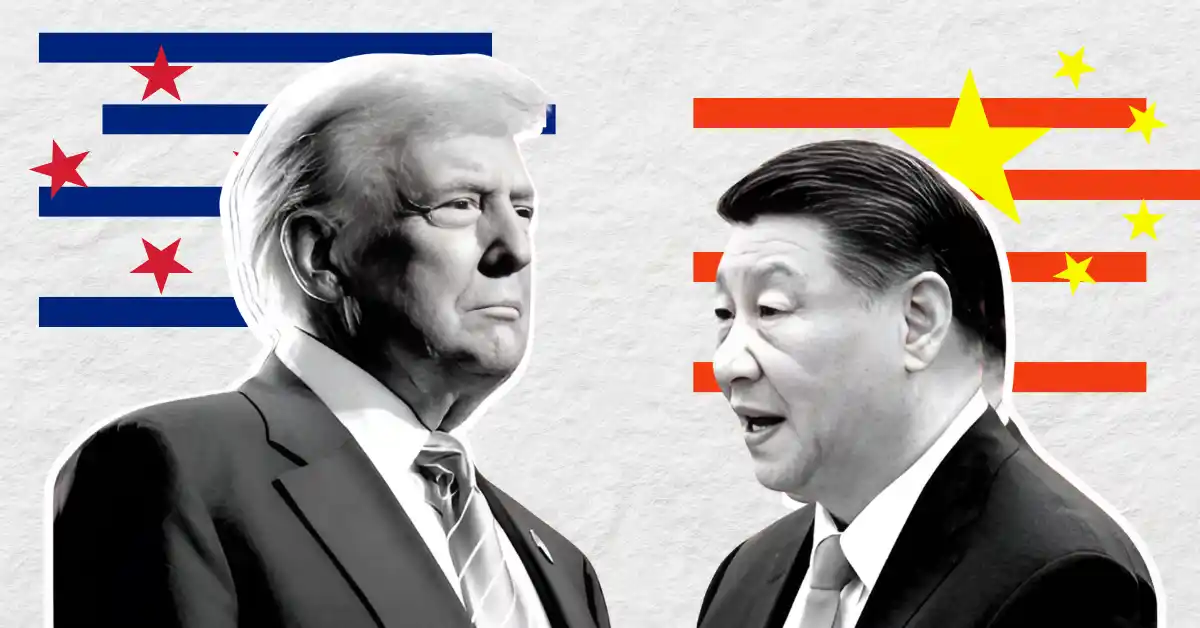
JD.com and Ant Group are urging China’s central bank to approve a yuan-pegged stablecoin in Hong Kong.
The move aims to counter USDT’s growing dominance in global trade and digital payments.
If approved, it could mark a major shift in China’s crypto stance and boost yuan internationalisation.
Two of China’s biggest tech firms, JD.com and Alibaba’s Ant Group, are urging the country’s central bank to allow a yuan-based stablecoin to launch in Hong Kong, sources told Reuters.
The goal? Push back against the rising dominance of U.S. dollar stablecoins like USDT and bring the Chinese yuan into the digital payments race.
Things are heating up. Read on to know more.
China’s Big Players Are Making Their Move
JD.com and Ant Group are reportedly in talks with the People’s Bank of China (PBOC), calling for the approval of a yuan-pegged stablecoin outside the mainland. Both companies already have plans to issue HKD-backed stablecoins once Hong Kong’s new crypto rules kick in on August 1.
But they say that’s not enough. Since the Hong Kong dollar is tied to the U.S. dollar, it does little to promote the yuan internationally, something Beijing has been aiming for over the last decade.
JD.com has made it clear in closed-door discussions that an offshore yuan stablecoin is needed urgently to support the currency’s global use, especially as dollar-backed digital assets continue to dominate.
USDT Is Winning the Digital Trade Game
There’s no denying it: the dollar is miles ahead in the stablecoin space. According to the Bank for International Settlements, over 99% of all stablecoins in circulation are backed by the U.S. dollar.
Chinese exporters are already shifting toward USDT for international payments, sidestepping currency risk and capital controls. Hong Kong-based OTC exchange Crypto HK said USDT trading volumes among Chinese clients have jumped five times since 2021.
“The global expansion of U.S. dollar stablecoins is posing fresh challenges to yuan internationalisation,” said Wang Yongli, former vice head of the Bank of China.
Beijing’s Digital Currency Dilemma
China has been clear about its long-term goal – to make the yuan a strong global currency like the dollar or euro. But capital controls, policy roadblocks, and its ban on crypto in 2021 have held it back.
Now, the numbers are starting to reflect that. The yuan’s share in global payments fell to 2.89% in May, while the U.S. dollar still holds over 48%, according to SWIFT data.
“China has reached a point where it can no longer avoid taking action,” said Xiao Feng, chairman of Hong Kong-based crypto exchange HashKey.
US Moves Fast – Can China Catch Up?
In the U.S., the stablecoin space is gaining regulatory support. President Donald Trump backed stablecoins shortly after returning to office, and his administration is now building a clear legal framework around them.
Meanwhile, Hong Kong is speeding up crypto regulations, creating a competitive environment that could become a launchpad for China’s digital currency efforts, without breaking the mainland’s crypto ban.
Ant Group is reportedly preparing license applications for stablecoin operations in both Hong Kong and Singapore, and JD.com is planning to apply in several key global markets.
The Bigger Picture
This push is clearly about protecting China’s role in the future of global finance.
If Beijing allows a yuan stablecoin to launch in Hong Kong, it could mark a shift in how China approaches digital assets and open the door to broader use of the yuan in cross-border trade.
With the U.S. leading the digital dollar movement, China’s window to act is narrowing. The stablecoin race is on, folks!
Never Miss a Beat in the Crypto World!
Stay ahead with breaking news, expert analysis, and real-time updates on the latest trends in Bitcoin, altcoins, DeFi, NFTs, and more.
FAQs
A yuan stablecoin could struggle without deeper reforms, particularly unifying onshore and offshore yuan markets. Other risks include lack of trust, concerns about capital controls, potential for state surveillance, and existing dollar dominance. Without addressing these, it may not gain significant international acceptance beyond specific bilateral agreements.
Both the U.S. (with the GENIUS Act) and Hong Kong (with its Stablecoins Ordinance) mandate fiat-pegging, full reserve backing, and licensed issuance. However, the U.S. aims to preserve dollar hegemony and uses a federal-state dual framework, while Hong Kong aims to be a Web3 hub, regulating HKD-pegged stablecoins while remaining open to foreign currencies and innovation. It’s a “race” to set global standards and attract digital asset innovation.
Yes, Hong Kong officials have suggested yuan-linked stablecoins could facilitate cross-border payments for China’s Belt and Road Initiative (BRI), especially for countries with volatile local currencies. This could enhance the yuan’s internationalization, streamline BRI project settlements, and potentially offer an alternative to traditional financial systems like SWIFT, alongside China’s e-CNY and mBridge efforts.
Trust with CoinPedia:
CoinPedia has been delivering accurate and timely cryptocurrency and blockchain updates since 2017. All content is created by our expert panel of analysts and journalists, following strict Editorial Guidelines based on E-E-A-T (Experience, Expertise, Authoritativeness, Trustworthiness). Every article is fact-checked against reputable sources to ensure accuracy, transparency, and reliability. Our review policy guarantees unbiased evaluations when recommending exchanges, platforms, or tools. We strive to provide timely updates about everything crypto & blockchain, right from startups to industry majors.
Investment Disclaimer:
All opinions and insights shared represent the author's own views on current market conditions. Please do your own research before making investment decisions. Neither the writer nor the publication assumes responsibility for your financial choices.
Sponsored and Advertisements:
Sponsored content and affiliate links may appear on our site. Advertisements are marked clearly, and our editorial content remains entirely independent from our ad partners.








